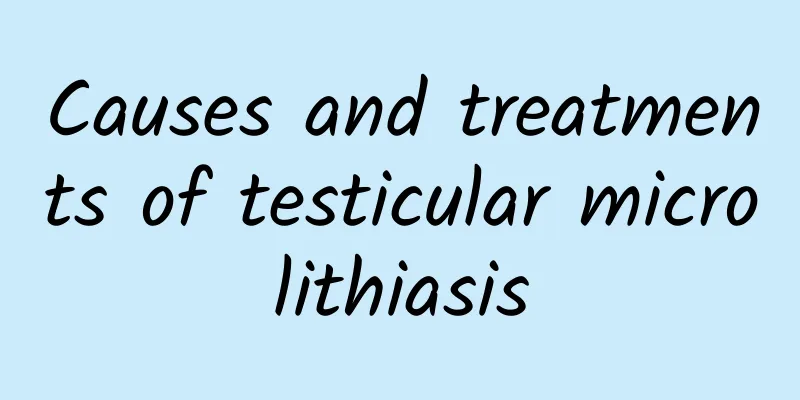How to treat prostatitis quickly?

|
For diseases like prostatitis, we generally use antibacterial treatment to alleviate the symptoms of the disease. You can also take some anti-inflammatory and analgesic drugs appropriately under the guidance of a doctor. Of course, if the disease is serious, you can go to a regular hospital for surgical treatment. 1. Antimicrobial treatment The treatment goal can be achieved by using a double-balloon catheter to block the prostatic urethra and injecting an antibiotic solution from the urethral cavity and then refluxing it into the prostatic duct. 2. Anti-inflammatory and analgesic drugs Nonsteroidal anti-inflammatory drugs can improve symptoms. Generally, indomethacin is taken orally or in suppositories. Chinese medicine also has certain effects in using anti-inflammatory, heat-clearing, detoxifying, and hardness-softening drugs. Allopurinol can reduce the concentration of uric acid in the whole body and prostatic fluid. Theoretically, as a free radical scavenger, it can also remove active oxygen components, reduce inflammation, and relieve pain. It is an optional auxiliary treatment method. 3. Physical therapy Prostate massage can empty the concentrated secretions in the prostate duct and drain the infection focus in the obstructed area of the gland. Therefore, for stubborn cases, prostate massage can be performed every 3-7 days while using antibiotics. A variety of physical factors are used for prostate physiotherapy, such as microwave, radio frequency, ultrashort wave, medium wave and hot water sitz bath, which are beneficial for relaxing the prostate, posterior urethral smooth muscle and pelvic floor muscle, enhancing antibacterial efficacy and relieving pain symptoms. 4. α-receptor antagonists Patients with prostatitis, bacterial or non-bacterial prostatitis have increased tension in the prostate, bladder neck and urethral smooth muscles. During urination, increased pressure in the posterior urethra causes urine to flow back into the prostatic duct, which is an important cause of prostatitis, prostatic stones and bacterial prostatitis. The use of α-receptor antagonists can effectively improve prostatitis and urination symptoms, which is of great significance for preventing recurrence of infection. 5. Surgical treatment Surgical treatment can be used for recurrent chronic bacterial prostatitis. Prostatectomy can achieve the goal of cure, but it should be used with caution. Since prostatitis usually affects the peripheral zone of the gland, transurethral resection of the prostate (TURP) is difficult to achieve the purpose of treatment. TURP can remove prostate stones and bacterial infection lesions near the prostate ducts, which is beneficial to reduce the reinfection of peripheral zone lesions. Chronic bacterial prostatitis can lead to recurrent urinary tract infections and infertility. |
<<: Man reveals: This is what ejaculation feels like!
>>: Prostatitis is very harmful, beware of infertility!
Recommend
Is there blood in the semen? Let's take a look!
Blood in semen is not easy to be noticed immediat...
Can oligoasthenozoospermia be cured?
In daily life, many couples hope to have their ow...
Swelling of the penis skin
We know that the male reproductive organ is a ver...
What is the reason for sperm to be jelly-like?
Sperm is a type of reproductive cell unique to ma...
Causes of high sperm head deformity rate and TCM treatment methods
Male semen contains a large number of sperm, incl...
How to train chest muscles if you have a flat chest?
Many men with flat chests feel that they have no ...
Swelling of the vas deferens
As the name suggests, the vas deferens is the pla...
What is the reason for back pain after sex? These two factors must be paid attention to
Many men experience varying degrees of back pain ...
How to control blood sugar? These four tips are really amazing!
The reason why many people have high blood sugar ...
What foods should you eat to lose weight in winter? This kitchen item actually works wonders!
In the blink of an eye, the snowy winter is comin...
Can drinking porridge also beautify your skin? What kind of porridge can beautify your skin?
Whole grains are rich in various nutrients needed...
How thick and long is normal for a man's penis?
For normal adult men of the yellow race, if it is...
How to make banana ice cream to keep you cool in summer
In the hot summer, when you are almost dizzy from...
What should I do if the red spots on the glans penis are peeling?
In our lives, many men have some male diseases th...
What to eat if you ejaculate too quickly
Nowadays, many young people often have the habit ...









